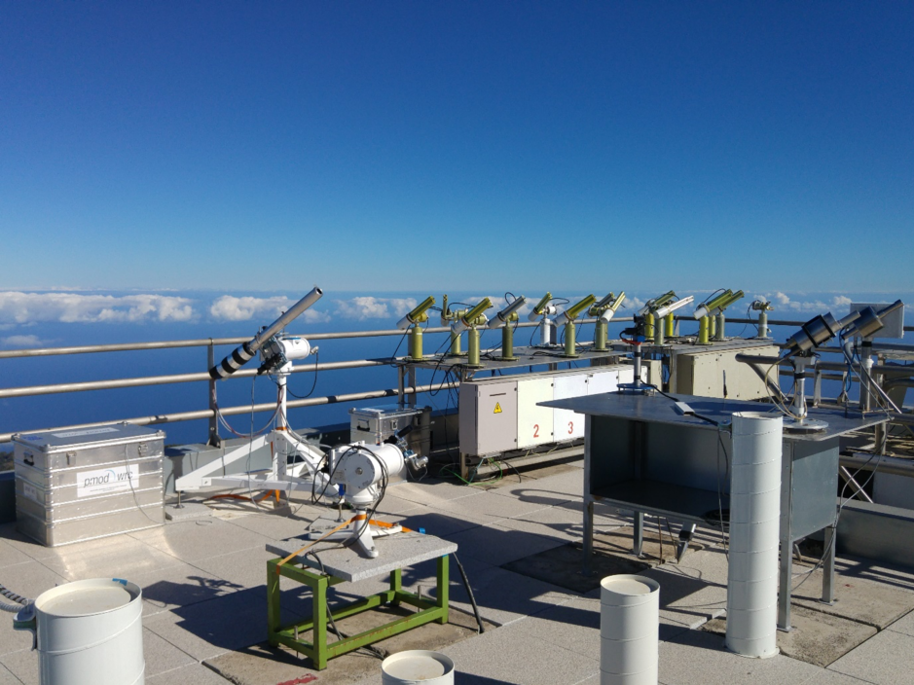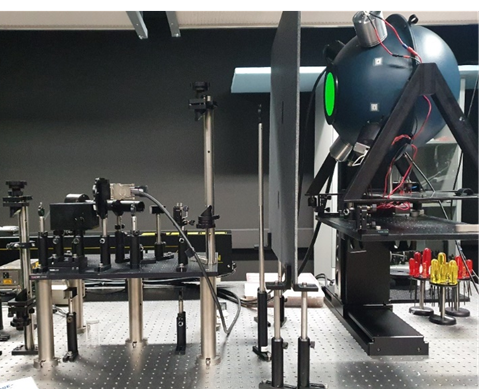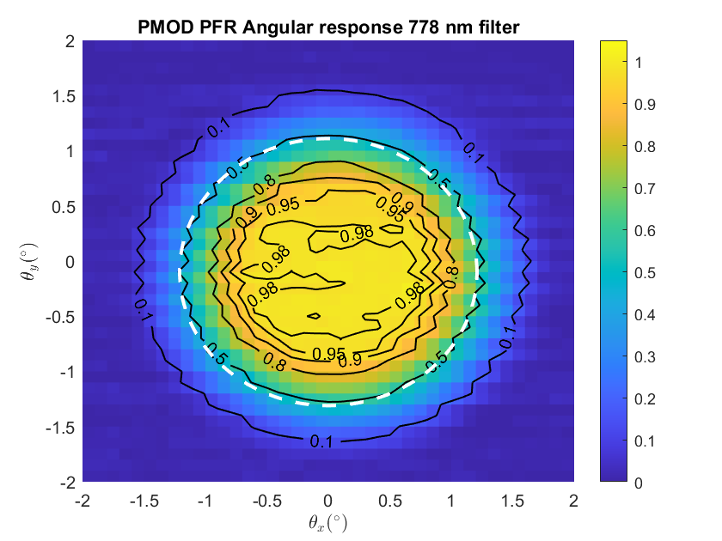MAPP (2020-2023)
The project
The overall aim of this project co-ordinated by PMOD (Physicalisch-Meteorologische Observatorium Davos, Switzerland) was to enable SI-traceable measurement of column-integrated aerosol optical properties retrieved from the passive remote sensing of the atmosphere using solar and lunar radiation measurements. Radiometers of the three largest aerosol monitoring networks were calibrated at NMI laboratories. Also, portable devices for the in-field calibration of network radiometers were developed in order to validate and improve the aerosol optical property retrievals using state-of-the-art inversion models. The project standardized aerosol optical properties retrieval by shortening the calibration chain, reduced calibration downtime of network radiometers, and established their consistent dissemination including uncertainty.

Aalto contribution
In the project, Metrology Research Institute developed and utilized a measurement setup for angular properties of radiometers. These are essential parameters for accurate measurements of aerosols. Also, nonuniformities of calibration sources were studied. In the earlier environmental projects with the same consortium, we developed novel simulation techniques to consider unknown correlations in uncertainty estimations. This work was continued in the project and Aalto used its gained experience in uncertainty evaluations with other partners [1].

Spatial uniformity measurements
During the project, we built a setup for measuring spatial uniformities of integrating spheres (Fig. 2). The spatial uniformity measurement setup was tested on our own integrating sphere [2] and used to study customer spheres. Two different methodologies were tested and compared, direct measurement by scanning a small detector in front of the sphere, and a reversed method utilizing lasers. Measurements of an integrating sphere of a project partner revealed a critical design error in the source which was corrected.
Angular measurements
We also built a setup for measuring angular responsivities of radiometers [3]. The setup for measuring angular responsivities of radiometers was used to measure angular responsivities of two radiometers of PMOD (Fig. 3) and one from the University of Rome. The results were compared with good agreement with the measurements of PMOD [4,5]. The maximum resolution of the measurements is 9 arcsec (0.0025 deg) constrained by the gimbal system. The results [6] are being published [7].

Spectral analysis of deviations from key comparison reference values
When studying the results of the key comparisons of spectral quantities, it appears that in many cases participants' results systematically deviate from the key comparison reference values over a limited spectral range. We carried out spectral analysis of such deviations in seven key comparisons of optical radiometry. The results reveal an approximate outcome that, on the average, each harmonic amplitude is inversely proportional to the order of the harmonic in all studied key comparisons. This new finding gives important information on the characteristics of spectral correlations. The result can be used in the uncertainty evaluation of spectral integrals, where the effect of unknown spectral correlations has earlier been challenging to assess quantitatively. [8].
References:
1. Kinza Maham, Petri Kärhä, and Julian Gröbner, “Uncertainty estimation in aero-sol optical depth,” Annual meeting of the Nordic Ozone and UV group (NOG2022), April 26 – 27, 2022, NILU, Oslo, Norway.
2. Kinza Maham, Petri Kärhä, and Erkki Ikonen, “Methodologies to measure spatial uniformities of integrating spheres,” Abstracts of CIE 2021 Conference, September 27 – 29, 2021, pp. 104 – 105. https://malaysia2021.cie.co.at/sites/default/files/cie_2021_abstract_booklet_0.pdf
3. Iiro Harju, Measurement setup for characterising angular responsivities of optical radiometers, Candidate work, Aalto University School of Electrical Engineering, Espoo, 2020, 20 p. (in Finnish).
4. I. Harju, P. Kärhä, E. Ikonen, J. Gröbner, N. Kouremeti, G. Hülsen, and S. Kasadzis, “Angular responsivity measurements of optical radiometers for estimating uncertainties of atmospheric aerosol measurements related to FOV effects,” 20th International Metrology Congress CIM2021, Lyon, September 7 – 9, 2021. https://www.cim2021.com/files/programmes/CIM2021-PapersAbstract-V1.pdf
5. Iiro Harju, Petri Kärhä, Erkki Ikonen, Julian Gröbner, Natalia Kouremeti, and Gregor Hülsen, “Angular responsivities of PMOD lunar radiometer,” Annual meeting of the Nordic Ozone and UV group (NOG2022), April 26 – 27, 2022, NILU, Oslo, Norway.
6. Petri Kärhä, Iiro Harju, Natalia Kouremeti, Gregor Hülsen, Jakob Föller, Monica Campanelli, Víctor Estellés, Julian Gröbner, and Erkki Ikonen, “Angular responsivity measurements of solar and lunar radiometers,” in Proceedings of NEWRAD 2023 Conference, Teddington, UK, September 11 – 15, 2023, pp. 211 – 212.
7. Monica Campanelli, Victor Estelles, Gaurav Kumar, Teruyuki Nakajima, Masa-hiro Momoi, Julian Gröbner, Stelios Kazadzis, Natalia Kouremeti, Angelos Ka-ranikolas, Africa Barreto, Saulius Nevas, Kerstin Schwind, Phillipp Schneider, Iiro Harju, Petri Kärhä, Henri Diémoz, Rei Kudo, Akihiro Uchiyama, Akihiro Yamazaki, Anna Maria Iannarelli, Gabriele Mevi, Annalisa Di Bernardino, and Stefano Casadio, “Evaluation of “on site” calibration procedures for sun-sky photometers,” Atmospheric Measurement Techniques, Preprint amt-2023-165 (2023). https://doi.org/10.5194/amt-2023-165.
8. Kinza Maham, Vili Kosonen, Juha Peltoniemi, Petri Kärhä, and Erkki Ikonen, ”Spectral analysis of deviations from key comparison reference values,” Metrologia 61, 015002 (2024). DOI 10.1088/1681-7575/ad0c9e
Contact person

- Published:
- Updated: